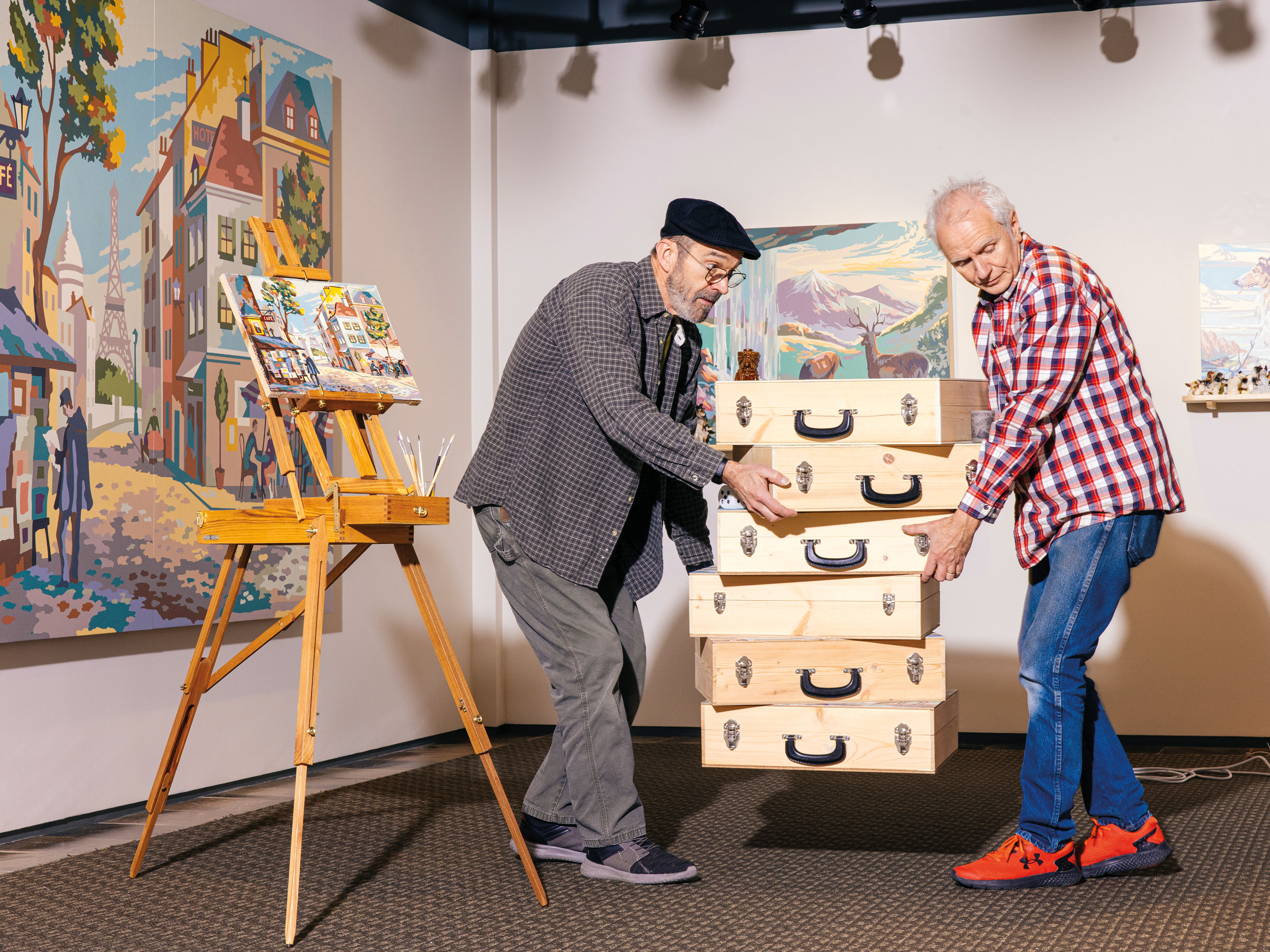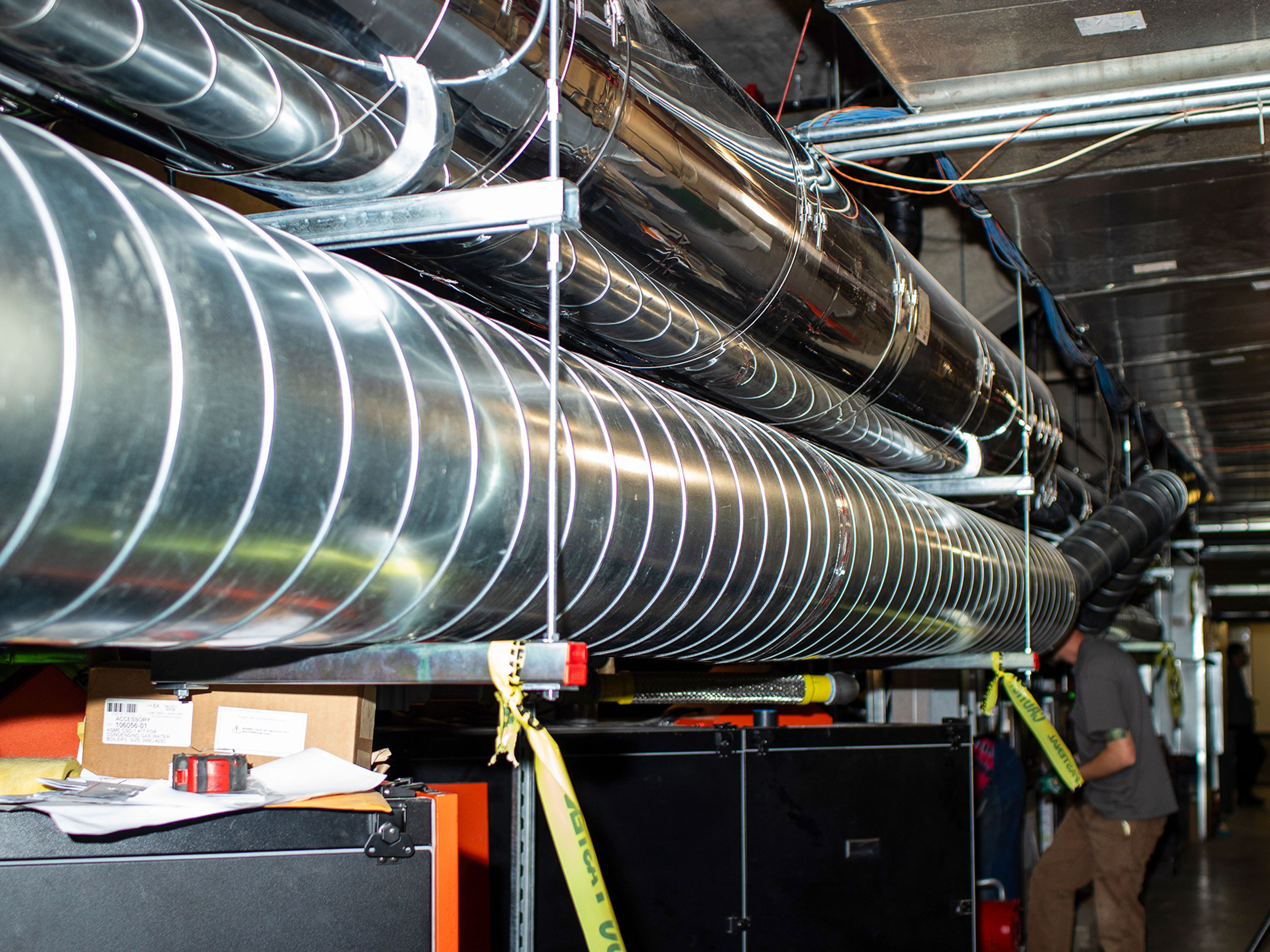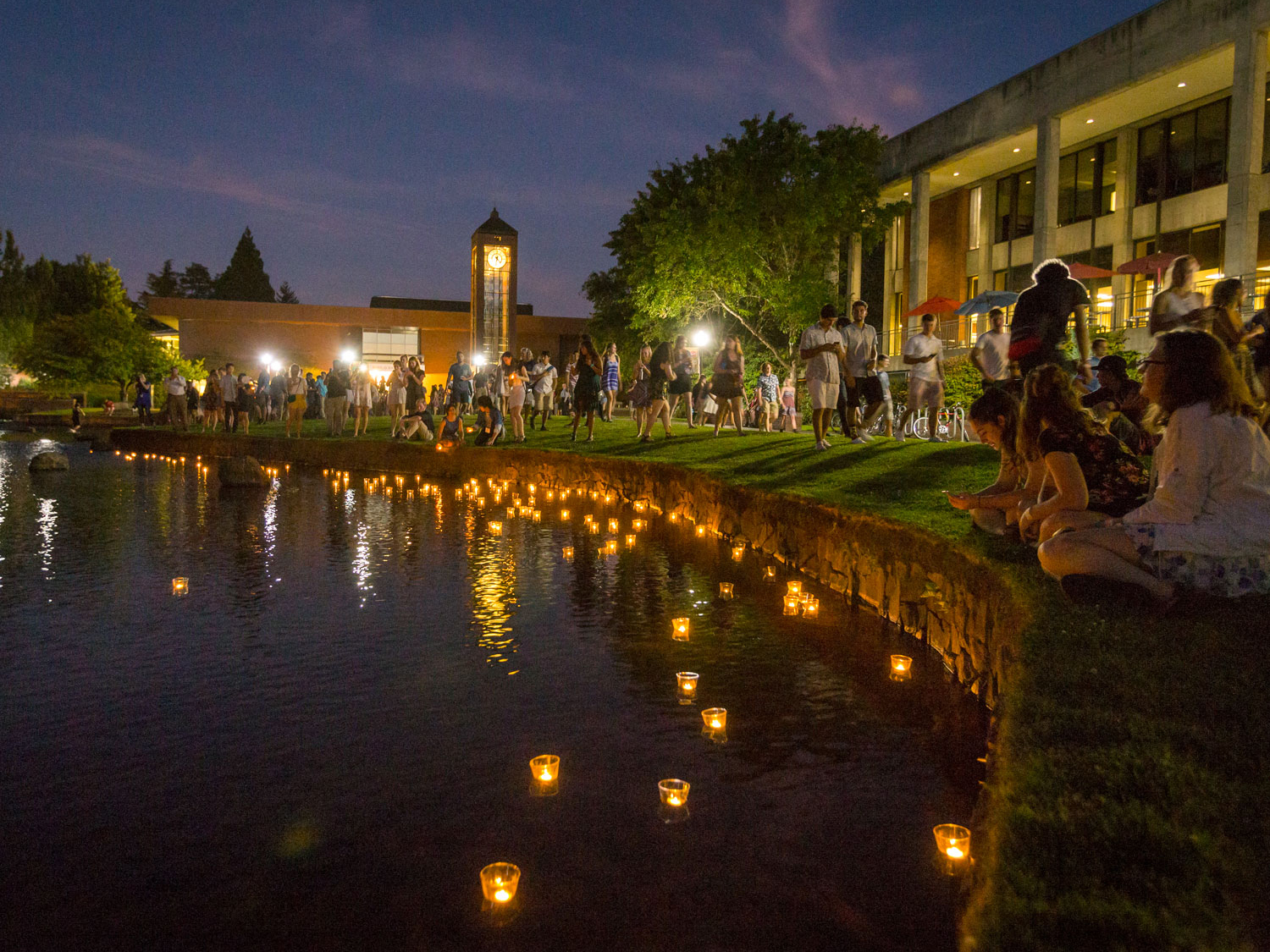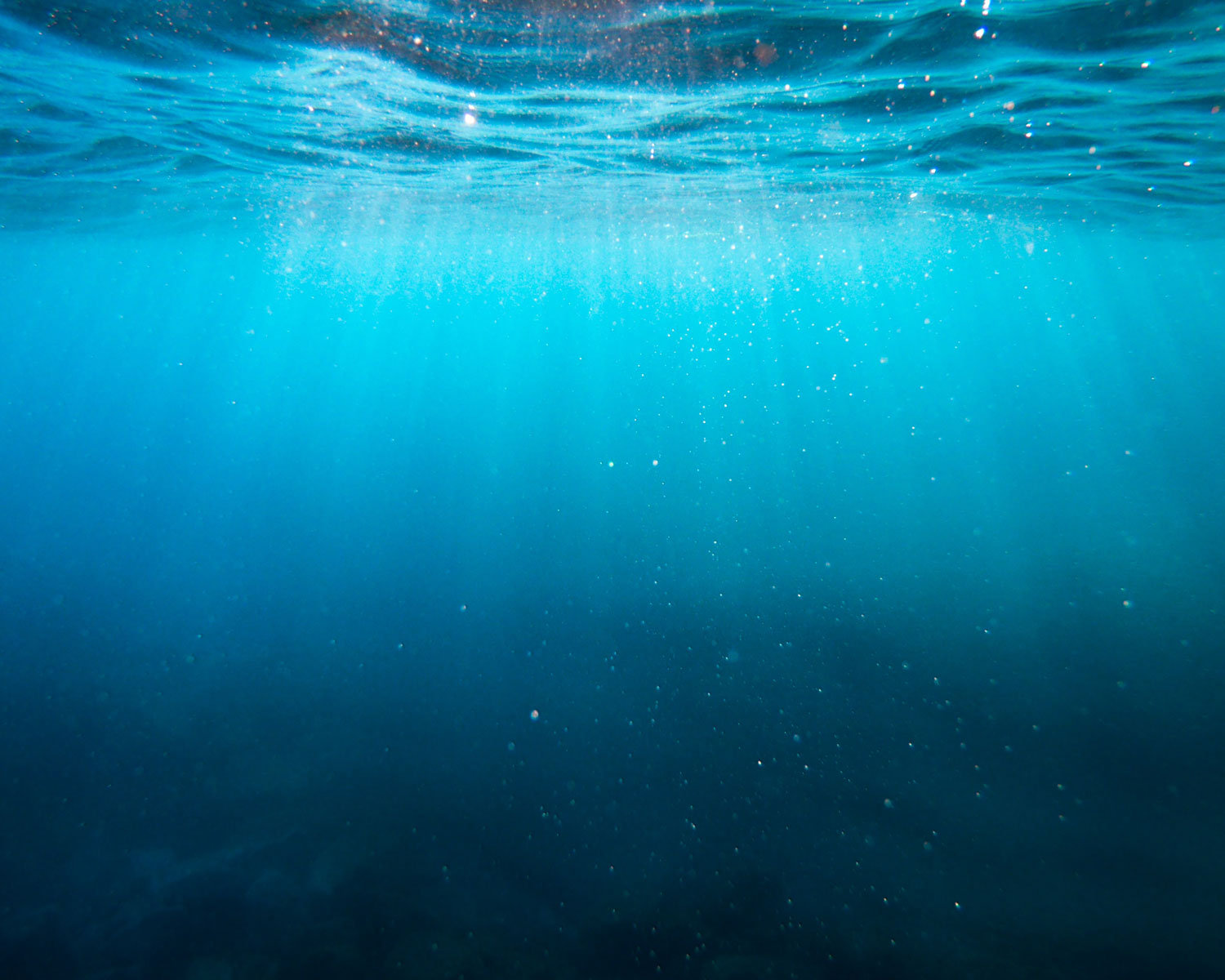
T
This story is so vast, swirling, and improbable that we can’t just dive in anywhere. Let’s start by floating back in time.
Picture a teenager, driving away from her tiny mountaintop town in Puerto Rico at the turn of the twenty-first century. Just fourteen years old, Rosa León Zayas is about to join a community of her fellow “science nerds” at a magnet boarding school on the other side of the island. Rosa’s mom waves goodbye and is struck by a feeling—not of foreboding, but of swelling pride—that her knowledge-hungry daughter is never coming back.
Now picture a gleaming-white submersible on the dock of the Woods Hole Oceanographic Institute in Massachusetts. It is 1964, and a crowd has gathered for the commissioning ceremony of the Alvin, which is strewn with patriotic bunting. Chubby and compact, Alvin resembles a child’s drawing of a submarine, yet its capacities as a crewed deep-sea research vehicle are unmatched.
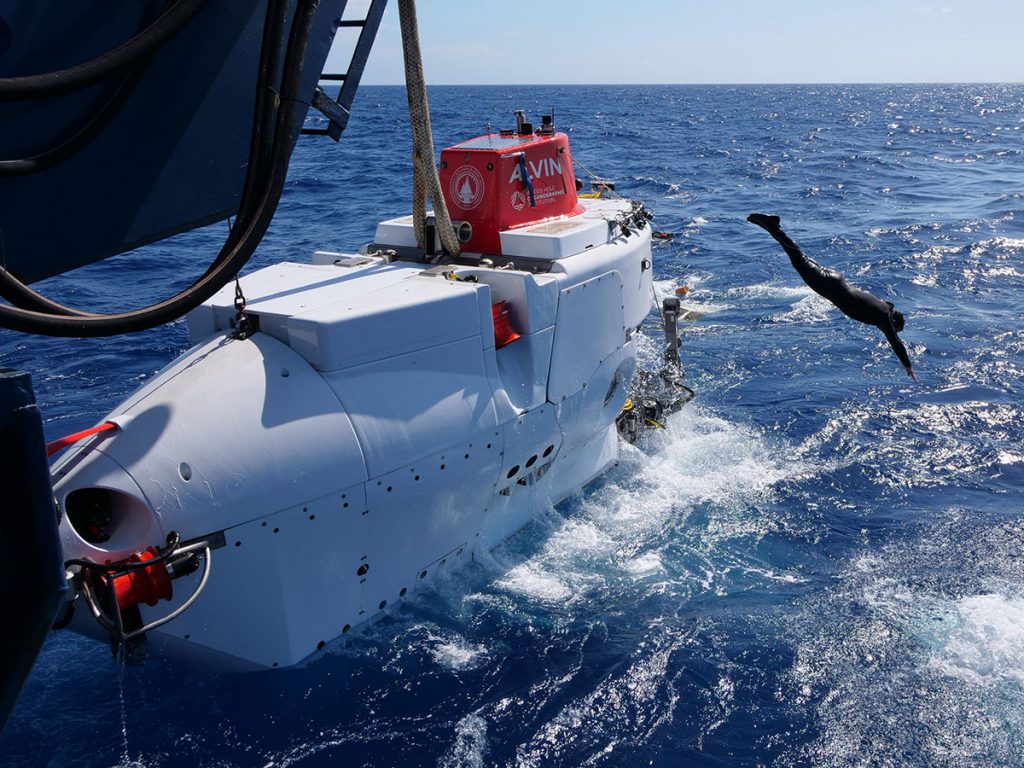
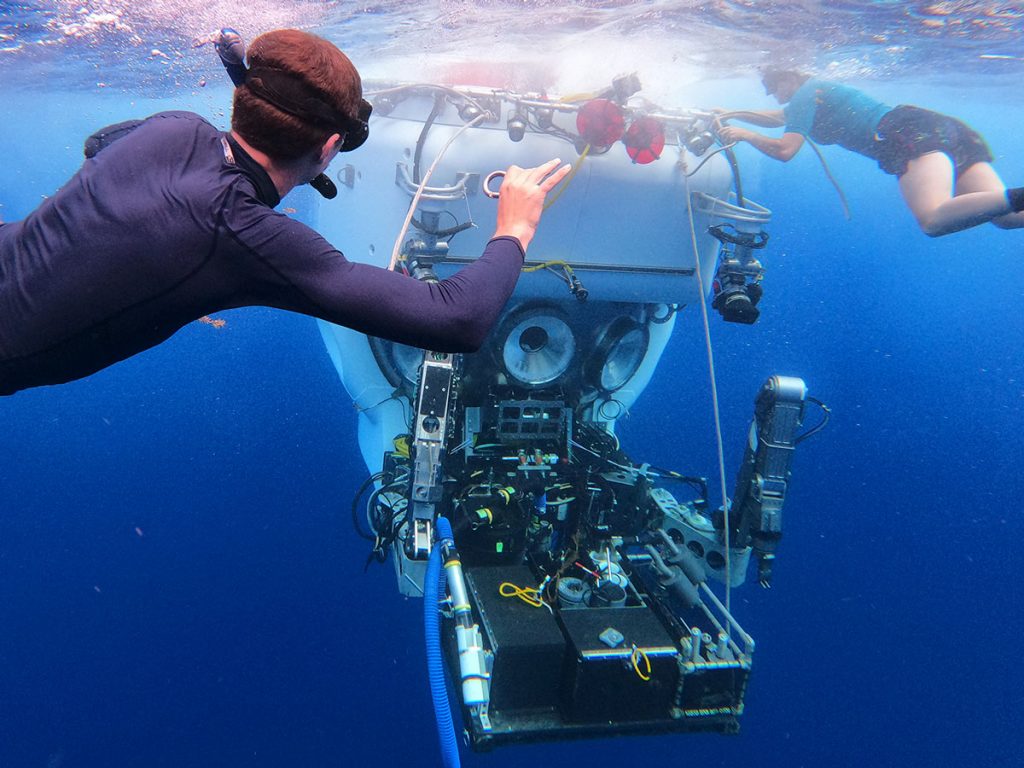
↑ A dive off Alvin, and a peek at it under water.
___
Alvin’s ability to carry people is key. Before the 1950s, scientists had almost no information about the deepest parts of the sea floor, and no access to it. Submarines existed, but they tended to be windowless, and couldn’t venture into the pitch-black, frigid, and crushingly high-pressure environments of ocean depths more than 3,000 meters (almost two miles) below the surface. One might as well have tried to sail into outer space on a hang glider. Yet Woods Hole scientist Allyn Vine (for whom Alvin is named) insisted that unlocking the mysteries of the ocean would depend on getting people into the most remote corners of the deep sea. As Vine reasoned, underwater instruments could only perform tasks for which they were designed. But underwater scientists? They could respond versatilely to surprises, and that’s when the real learning would get underway.
Vine’s prediction was correct. León Zayas’s mom’s prediction was, too. At the time that each launched, Alvin and fourteen-year-old Rosa were set on a course to one day travel the world in service of ocean research. Many years on, León Zayas and Alvin were also destined to become collaborators of sorts. But that part of the story comes later.
Back to Puerto Rico in the early 2000s. An aptitude for science propelled Rosa León Zayas to the Scripps Institution of Oceanography at the University of California–San Diego, where she received a PhD. She became Dr. León Zayas, environmental microbiologist, genomics expert, and, since 2017, an assistant professor of biology at Willamette.
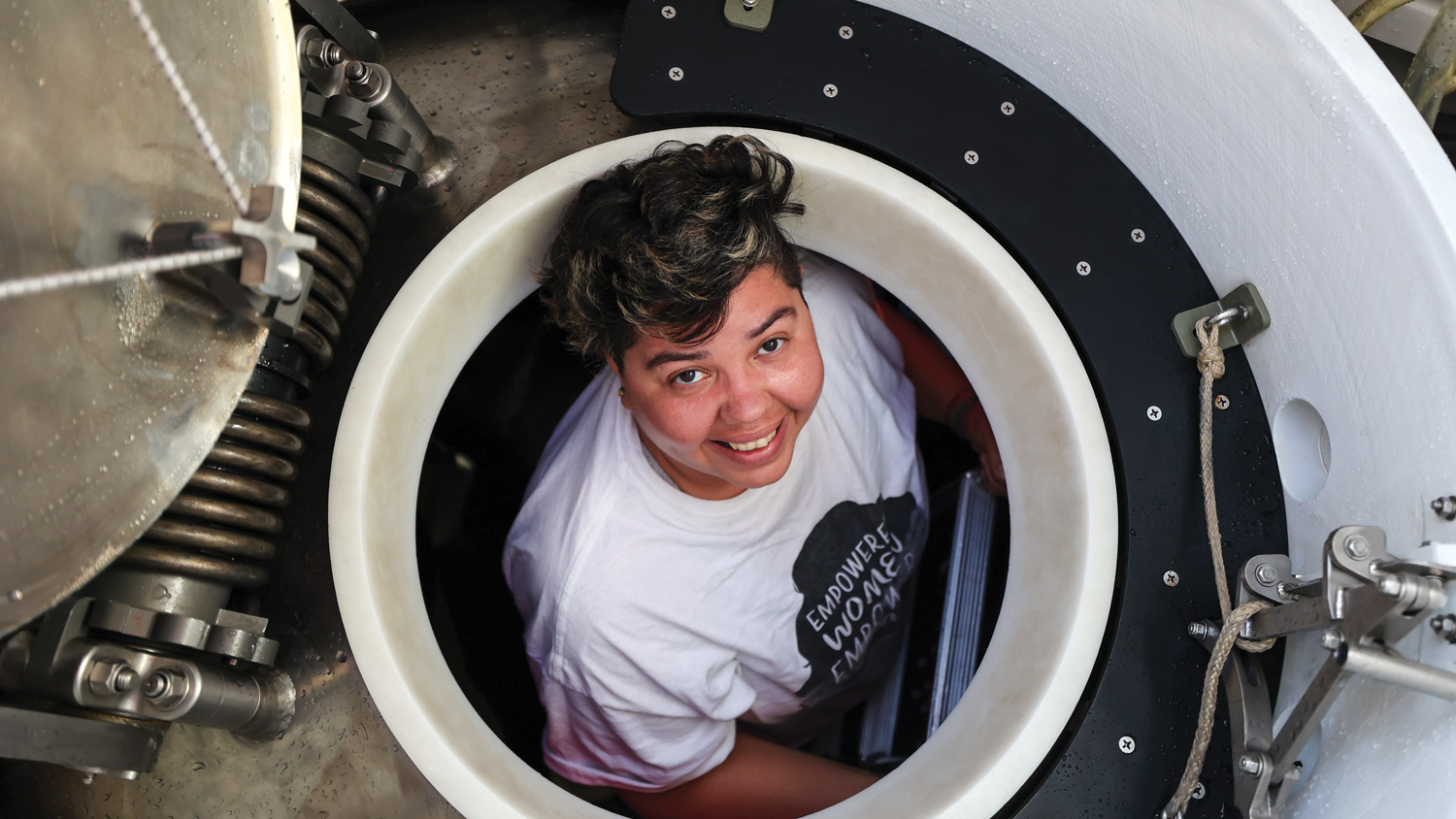
León Zayas’s own education was shaped by a rising tide of new oceanographic data that Alvin had helped collect in the forty years before she went to college. By the early twenty-first century, scientists were able to read the ocean floor as an archive that held clues to Earth’s geological history and the evolution of its climate and species. They also knew more about the astonishing organisms found in the ocean’s most inhospitable depths.
The deeper in the ocean a life form is found, the more enigmatic its existence. Sunlight penetrates the water no more than 1,000 meters (six-tenths of a mile) past the surface. Life forms beyond that depth live in darkness, with few resources apart from whatever drifts down from the surface as so-called “marine snow,” which is a mixture of fecal matter, remnants of dead organisms, and silt. How, then, do these deep-sea life forms harness energy? For that matter, at sea depths where the pressure is potentially a thousand times greater than on land, why do they not implode?
León Zayas has dedicated her career to answering these kinds of questions. For example, she’s documented a range of surprising things that deep-sea microbes can metabolize into assets, using chemicals, rather than sunlight, as their energy source. León Zayas’s specialty is identifying the genes and genetic “on-switches’’ that microbial communities must possess to survive in the Earth’s most remote and extreme environments, including in the ocean’s hadalpelagic zone.
The hadalpelagic, or hadal, zone describes plunging trenches at least 6,000 meters deep, comprising the deepest depths of the ocean. To appreciate that superlative, consider that the average depth of the global ocean is approximately 4,000 meters, or about the same height as Mount Hood with two Portland Wells Fargo Centers stacked end-to-end on top. By contrast, the deepest crevice of the Pacific Ocean’s Mariana Trench stretches down a jaw-dropping 11,000 meters. The Mariana Trench as a whole could contain Mount Everest.
Named for Hades, the Greek god of the underworld, hadal zone trenches are estimated to have formed sometime between 120 million and 200 million years ago, when one rocky slab of the ocean floor buckled and slid beneath another. The resulting deep pockets of ocean became rarified undersea ecosystems with enough uniquely adapted species to keep León Zayas busy with a lifetime of inquiries—which suits her fine. She has conducted research on samples from the Mariana, Tonga, and Middle American trenches, all located in the Pacific Ocean.
Yet, for all her growing expertise on trench organisms, León Zayas had yet to spend time in an ocean trench. Like many other marine scientists, she obtained some samples with “landers,” or tools that freefall to the ocean bottom and later bob back to the surface with whatever they collect. Valuable ocean floor sediment samples are harder to get, as these require a gravity core instrument, and an assist from a robotic device. Beyond 6,000 meters below sea level, the ocean’s archive has mostly been barred to human exploration. More people have visited the moon than have personally visited the deepest parts of the ocean.
With an assist from León Zayas, Alvin is going to change that.
Alvin’s…
WEIRDEST MOMENT:
being lost on the bottom of the ocean between 1968 and 1969
GREATEST ACCOMPLISHMENT:
discovery of hydrothermal vents, or evidence of sub-seafloor volcanic activity that enables vibrant ecosystems in extreme ocean depths, in 1977
CELEBRITY ENCOUNTER: exploring the wreckage of the R.M.S. Titanic in 1986
WITNESS TO DESTRUCTION: documenting the effects of oil spillage on deep- sea corals after the 2010 Deepwater Horizon disaster
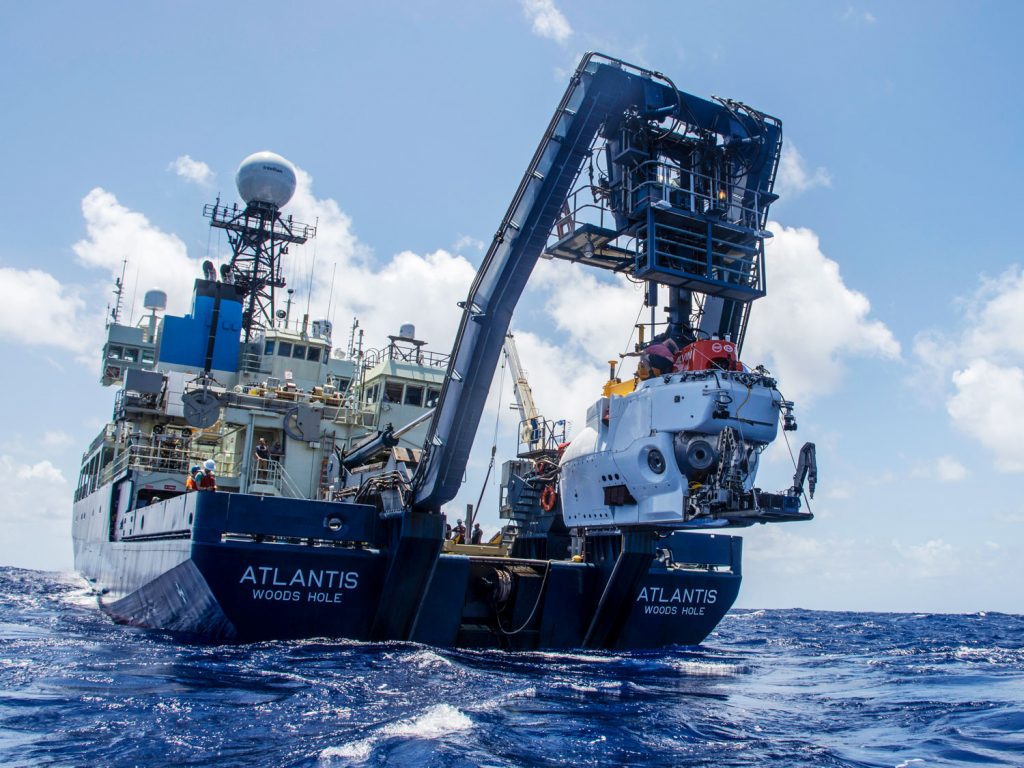
Today, Alvin looks less like a cartoon sub and more like WALL-E’s underwater cousin, with two robotic arms and a large front collection basket. Piece by piece, the sub has been revamped half a dozen times, so it could stay at the forefront of submergence technology and keep up with its hard-working research schedule. France, Japan, Russia, and, lately, China have deep-sea research vehicles that can go as deep or even deeper than Alvin, but no human-occupied submersible in the world has been as proven or productive. In its fifty-eight years, Alvin has gone on 5,075 dives, which is more dives than those undertaken by all the other countries’ submersibles put together.
A recent $8 million overhaul increased Alvin’s depth rating from 4,500 meters to 6,500 meters. To understand the ramifications, consider that, at the time of its prior upgrade in 2013, Alvin was able to explore 63 percent of the ocean. Having cleared its final safety-test protocols, the new Alvin now has access to 99 percent of the ocean, including all but the most extreme of the hadal zone depths. Geologist Adam Soule of Woods Hole says the newly accessible depths almost guarantee the discovery of novel species with each descent.
About the Expedition
Aboard the submersible Alvin this past summer, Professor Rosa León Zayas and other scientists explored the Puerto Rico Trench, which is the deepest part of the Atlantic Ocean.
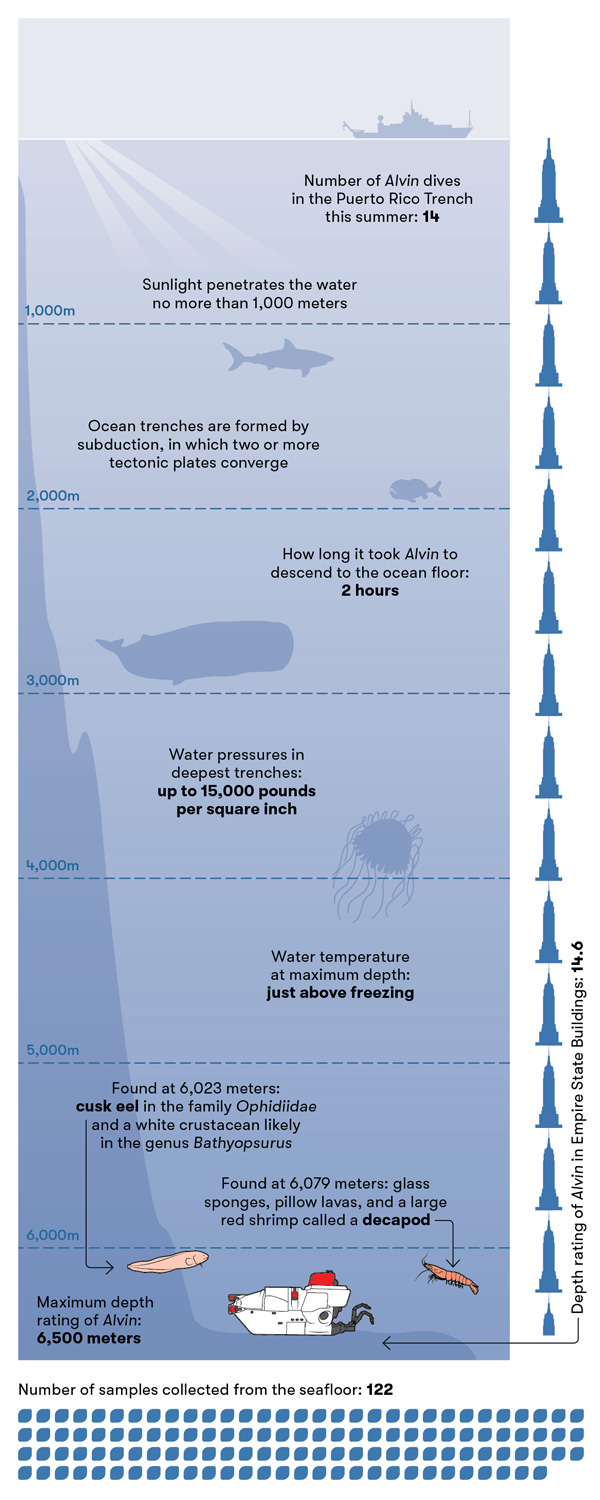
When Soule set out to choose a research crew for the upgraded Alvin, he turned to none other than León Zayas. In addition to asking her to join the mission, he sought her help in choosing the other participants. As the youngest of Alvin’s planning team, León Zayas helped review applications to assemble a diverse, multidisciplinary group of deep trench scientists. Each participant’s individual research interests had to complement those of the rest of the group. Not all will dive on Alvin, which can carry only two scientists and a pilot. Some will instead serve aboard Alvin’s tender ship, Atlantis. Essentially a floating, twenty-four-hour scientific operation, Atlantis has both the technology and the square footage to host the geologists, chemists, biologists, and other subject experts who help process Alvin’s findings. Those onboard Alvin get to collect their own research samples, but they also must gather up items requested by others: sediments, vials of water, and even tiny critters.
In July, León Zayas participated in the upgraded Alvin’s first science verification dive, a ten-hour opportunity to test the sub’s enhanced equipment, including its new ability to share images with Atlantis in real time. The dive also helped determine best practices for the descent and ascent (an important consideration on a craft with no bathroom).
For her inaugural dive, León Zayas donned warm clothing (temperatures inside Alvin hovered around 45 degrees Fahrenheit), climbed through Alvin’s hatch, and settled within the curved walls of its titanium personnel sphere. She, along with Alvin’s pilot and one other scientist, spent two hours descending, feeling the temperature dip, and watching as the ocean waters outside Alvin’s five small windows changed from blue-green to dark blue to inky black. They sank through the darkness until the pilot flicked on Alvin’s exterior lights. Then León Zayas peered out at the Puerto Rico Trench, which she had studied, but had never witnessed directly with her own eyes.
Picture a Willamette professor, about a month earlier, animatedly explaining messenger RNA in her Olin Science Center office, and grinning modestly at the suggestion that her Alvin dives would pique her students’ interest in field biology. In fact, they’re already hooked. That morning, the biology department had congratulated León Zayas’s two summer research students, who spent months isolating the specific genes that allow “plastic eating” microbes to biodegrade plastics. The microbes they were studying happen to live on land, but the potential application is a clear source of hope for the ocean’s plastic problem.
By next summer, Alvin’s deep trench dives will have brought their own new discoveries, and ultimately, new knowledge and applications. “There’s so much to learn,” says León Zayas, “and it feels like it’s just the beginning.”
What is now hidden below the sediment of the hadal zone may ultimately help us remediate ocean environments and devise cures for human maladies. Trench microbes have a story of survival and adaptation written in their DNA. Thanks to León Zayas and her fellow deep-sea researchers, that story is finally beginning to surface. Read backwards, it documents the evolution of life in the ocean depths. Read forwards, it may reveal a path for our planet’s future.
••
Mary Elizabeth Strunk writes about science and history and the big ideas that are changing both.
